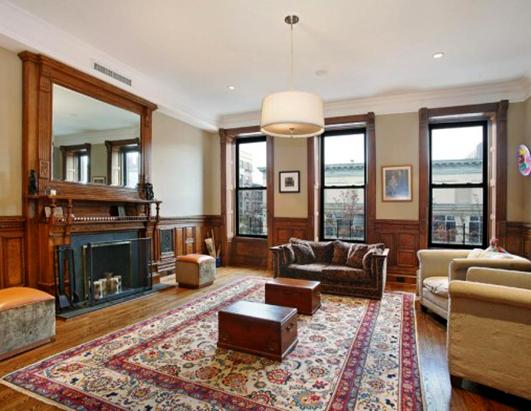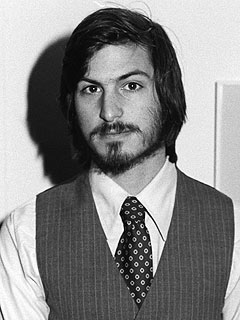Link.
On Autumn Ave. in working class Cypress Hills sits a modest $462,000 brick two-family home with a postage-stamp sized front yard and a warning sign, These Premises Protected by Video Surveillance.
The owner pays $6,919 in property taxes.
Six miles away on Fourth St. on one of upscale Park Slopes most exclusive blocks sits an impressive $2.5 million four-story brownstone with a lush backyard garden, four bedrooms and three baths.
The owner of that lovely home pays $6,209 in property taxes $710 less than his fellow Brooklynite, whose plot sits in one of the citys poorest zip codes.
We just got our tax bill, and it went way up. We were in shock, said Jhora Akther, daughter of the Autumn Ave. homeowner. To have to pay this much, its not fair.
When it comes to property taxes, New York City homeowners live in an upside-down Alice In Wonderland world a system that often favors the rich and punishes lower- and middle-income property owners, a Daily News investigation has found.
Because of the bizarre way the city taxes residential property, owners in upscale gentrified New York neighborhoods like Park Slope, Brooklyn Heights and the upper East Side often wind up paying less than owners in hardscrabble zip codes like East New York and Canarsie in Brooklyn, South Jamaica in Queens and Mott Haven in the Bronx.
Property taxes collected under this unequal system are the citys biggest single source of money, accounting for 40% of all revenue and totaling $18.7 billion this year.
By law, the city is supposed to treat everyone the same, assessing taxes based on what the Finance Department determines as the estimated market value" of a property and then applying a uniform 6% assessment ratio to that number.
Records show it doesnt happen that way.
At the request of The News, the citys Independent Budget Office performed an analysis of tens of thousands of property tax records citywide and found wide disparities" in how the Finance Department nails down its version of market value.
The budget office review of 135 neighborhoods for fiscal 2014 found the city overvalues residential property in 28 of the poorest neighborhoods while undervaluing residences in upscale zip codes.
Take East New York/Cypress Hills, where 51% of residents received some form of public assistance in 2010 and crime has jumped 14% since 2011.
The median sale price for residential properties there is $249,000, but the Finance Department put the median estimated value there at $394,000, the budget office found.
Ditto with the home on Autumn Ave., which was sold in February for $462,000 but was tagged by the city in January with a market value of $621,000, records show.
The net effect is that homeowners with inflated market value estimates pay more in annual property taxes since their bill is based on the value assigned to their home by the city.
Meanwhile, the city appears to undervalue homes in many upscale and middle-class neighborhoods, finding estimated market values that are less than actual sales prices.
This is true in the West Village and the Upper East Side, where property values never seem to diminish, as well as gentrifying neighborhoods like Fort Greene, DUMBO, East Williamsburg and Greenpoint in Brooklyn, the study found.
George Sweeting of the budget office thinks the incorrect values result from the fact that the city cant keep up with the fast-moving increase in values, so the bar remains artificially low when the city calculates taxes owed in these zip codes.
In Park Slope, the citys median estimated market value rang in at $1.29 million, but the actual median sales price for that neighborhood was $1.42 million.
The same pattern emerged with the Park Slope brownstone on Fourth St.: The city estimated its market value was $1.9 million in January well below the $2.5 million it sold for that same month, records show.
There are wide disparities between neighborhoods in the extent and direction of the differences, Sweeting said.
A former Finance Department staffer who reviewed the data told The News, The very first thing in any system is you have to get the market value right. If you cant get the market value right, the rest of the assessment system is compromised.
Finance Department spokesman Owen Stone disagreed with the budget office findings, saying data suggest that city assessors get it right more often than not.
Were pretty close...in almost every neighborhood, he said. Im sure youre going to find some disparities. When you take a look at the whole, even by neighborhood, even by borough, were pretty close to the target ratio. We have good values."
This taxation inequality is aggravated by another phenomenon that occurs because the city caps the amount residential property taxes can rise each year.
The cap was meant to prevent sticker shock for homeowners, but it winds up benefitting high-end latte neighborhoods at the expense of working class bodega nabes, experts say.
With homes, assessment increases that result from market conditions cannot exceed 6% in a single year and 20% over five years, regardless of how fast the market value is growing.
This creates a crazy scenario where a $462,000 two-family home on E. 86th St. that sits next to a truck depot in Canarsie pays $7,582 nearly $500 more than the owner of a newly renovated $2 million brownstone on Lincoln Place a block from Prospect Park in Park Slope.
Within the borough, its hard to explain how you can have these wild variations, said a former Finance employee who spoke to The News on the condition of anonymity.
A neighborhood like Canarsie has not experienced consistently rising property values, even during the housing runup of 2005-2008.
Property values there have remained steady, so homeowners each year face the full 6% assessment ratio thats applied to whatever the city deems the estimated market rate.
Thats true throughout neighborhoods in south Queens like Jamaica and Ozone Park, all of the South and Central Bronx, and working class Brooklyn locales like Flatlands and Mill Basin.
Neighborhoods that arent experiencing a lot of appreciation, they can move toward the target 6% ratio and just stay there, Sweeting said. So the effective tax winds up being higher in more stable neighborhoods."
But neighborhoods like DUMBO, Park Slope and Fort Greene in Brooklyn, both the upper East and West Sides in Manhattan, and Long Island City in Queens experience a consistent rise in sales - thus triggering the cap.
As a result, they wind up taxed far below the 6% ratio their neighbors in the hinterlands endure. At times, theyre taxed at a ratio as low as 1%, records show.
Carol Kellerman of the Citizens Budget Commission a longtime critic of the citys assessment system says the tax cap system winds up benefiting the wealthy, hurting the poor and leaving taxpayers holding the bag.
The goal is to smooth out for people the amount of the hit they take, but its not based on need. So no matter what your income level is, even if you could afford to pay that tax, you dont have to pay it, Kellerman said. Were just giving it away. Well never get to recapture that amount.
Stone of the Finance Department agreed that caps hold down assessed values in areas where market values are rising rapidly, but said his agency is just following the rules.
Thats what theyre designed to do, he said. And theyre mandated by state law.
This home in Park Slope has a value of $2.5 million, but the owners pay $6,209 in property taxes.

This home in Park Slope has a value of $462G and the owners pay $6,919 in property taxes.






